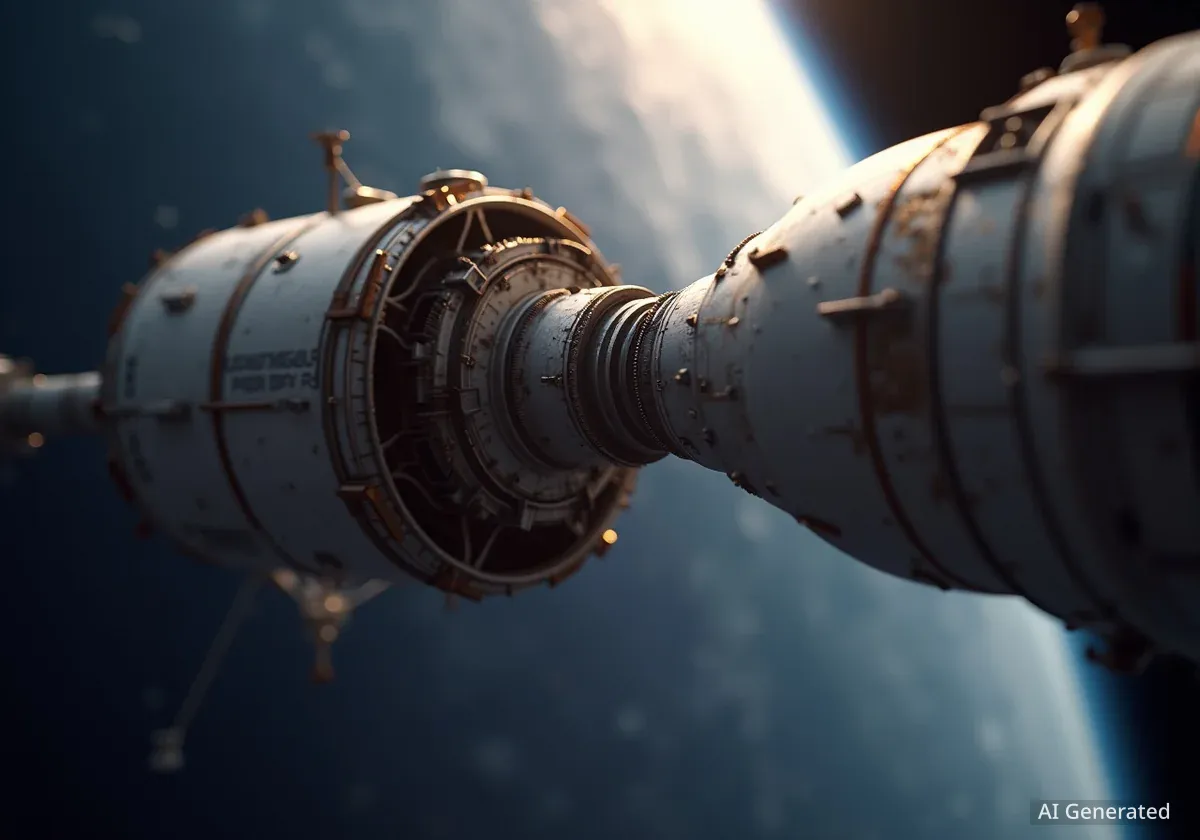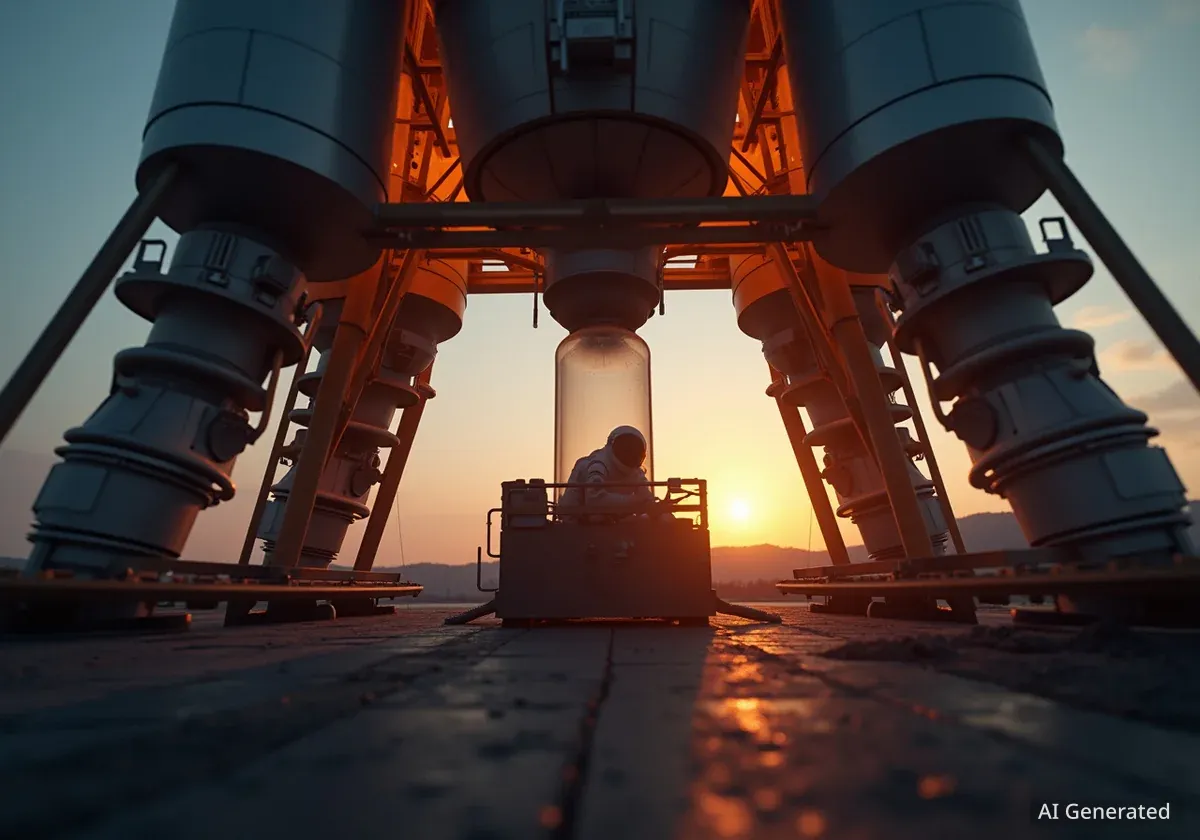A Northrop Grumman Cygnus spacecraft carrying over 11,000 pounds of essential supplies to the International Space Station (ISS) will not arrive as scheduled. NASA has confirmed a delay after one of the vehicle's main engines shut down prematurely during a crucial orbital maneuver.
Flight controllers for NASA and Northrop Grumman are currently assessing the situation and developing an alternative plan to guide the resupply craft to the orbiting laboratory. A new arrival date has not yet been announced.
Key Takeaways
- The Cygnus XL cargo spacecraft's arrival at the ISS, planned for Wednesday, has been postponed indefinitely.
- The delay was caused by a main engine shutting down earlier than planned during an orbit-raising burn.
- The spacecraft is carrying 11,000 pounds of science experiments, crew supplies, and hardware.
- NASA and Northrop Grumman are working on a revised rendezvous plan; all other systems on Cygnus are reported to be functioning correctly.
Engine Anomaly Halts Rendezvous
The issue occurred early on Tuesday morning as the Cygnus XL spacecraft was executing a series of engine burns. These pre-planned maneuvers are designed to gradually raise the spacecraft's altitude to match that of the International Space Station, which orbits approximately 250 miles above Earth.
According to a statement from NASA, one of the spacecraft's primary engines stopped firing before completing its programmed duration. This interruption prevented Cygnus from achieving the necessary orbit for its planned rendezvous on Wednesday morning.
"NASA and Northrop Grumman are delaying the arrival of the Cygnus XL to the International Space Station as flight controllers evaluate an alternate burn plan for the resupply spacecraft," the space agency announced in an official update.
Despite the engine trouble, officials have stressed that the situation is stable. All other systems aboard the Cygnus XL are performing as expected, and the spacecraft is not in any immediate danger. The focus for mission control is now on recalculating the trajectory and planning a new series of engine burns to safely correct the spacecraft's course.
A Mission Packed with Critical Cargo
The Cygnus spacecraft, designated NG-23 for this 23rd commercial resupply mission, is loaded with a significant amount of cargo vital for the station's crew and ongoing research. The total payload weighs approximately 11,000 pounds (nearly 5,000 kilograms).
Cargo Manifest Highlights
The 11,000-pound payload includes a diverse mix of supplies, such as new scientific experiments for microgravity research, essential hardware for station maintenance and upgrades, and fresh food and provisions for the astronaut crew.
This mission launched on Sunday from Cape Canaveral, Florida, aboard a SpaceX Falcon 9 rocket. The use of SpaceX for this launch is part of a commercial partnership that allows for flexibility in getting cargo to the ISS.
The Original Arrival Plan
The original flight plan scheduled the Cygnus to arrive at the space station on Wednesday at 6:35 a.m. EDT. Upon its approach, NASA astronaut Jonny Kim was tasked with operating the station's robotic arm, the Canadarm2, to capture the free-flying spacecraft.
Fellow NASA astronaut Zena Cardman was assigned to serve as backup for the intricate capture procedure. Once secured, ground controllers would have maneuvered the Cygnus to berth it to the Unity module's Earth-facing port. The spacecraft is planned to remain attached to the station until March 2026, serving as extra storage before being loaded with trash for a fiery disposal upon re-entry.
Assessing the Path Forward
Mission teams from both NASA and Northrop Grumman are working around the clock to analyze the telemetry data from the failed engine burn. Their goal is to understand the precise cause of the early shutdown and determine if the engine can be used again reliably.
The Cygnus Spacecraft
The Cygnus cargo vehicle is an uncrewed, expendable spacecraft developed by Orbital Sciences Corporation, which was later acquired by Northrop Grumman in 2018. It consists of two main parts: a service module for propulsion and power, and a pressurized cargo module where supplies are stored. It is one of several commercial vehicles, alongside SpaceX's Dragon, used to keep the ISS supplied.
Engineers will formulate a new flight plan, which may involve using the same engine for shorter burns or relying on backup systems if necessary. The timing of the next arrival attempt will depend entirely on the confidence of the flight control team in the revised plan.
This delay highlights the complex and often unpredictable nature of spaceflight operations. Even routine missions like cargo resupply require precision, and any deviation from the plan necessitates a careful and methodical response to ensure the safety of the space station and its crew.
Fortunately, the ISS is not in immediate need of supplies. Less than a week ago, a Russian Progress cargo spacecraft successfully docked with the station, delivering approximately 2.8 tons of food, fuel, and other provisions. This recent delivery provides a comfortable buffer for the crew while engineers work to resolve the issue with the Cygnus.





